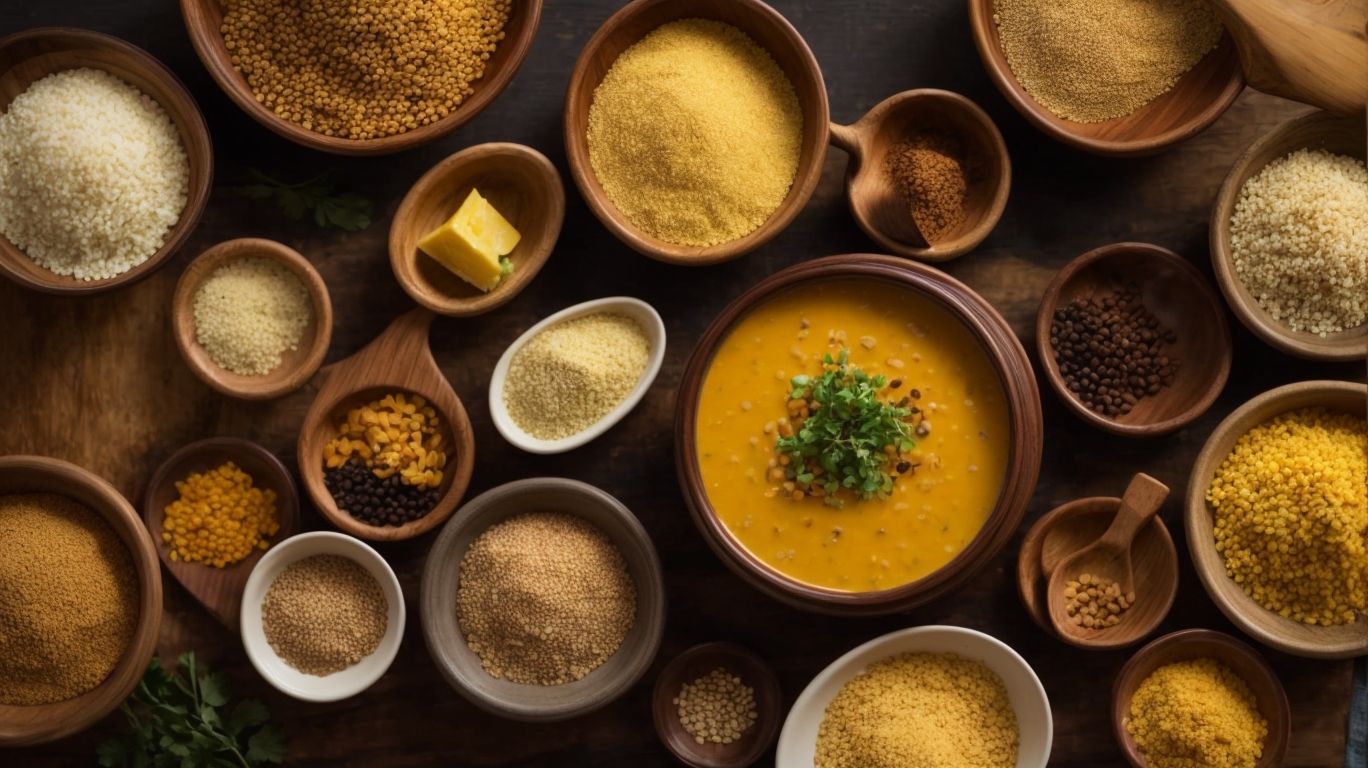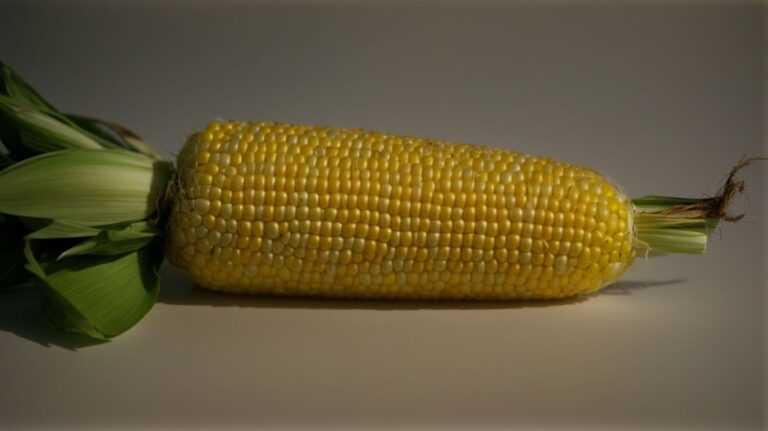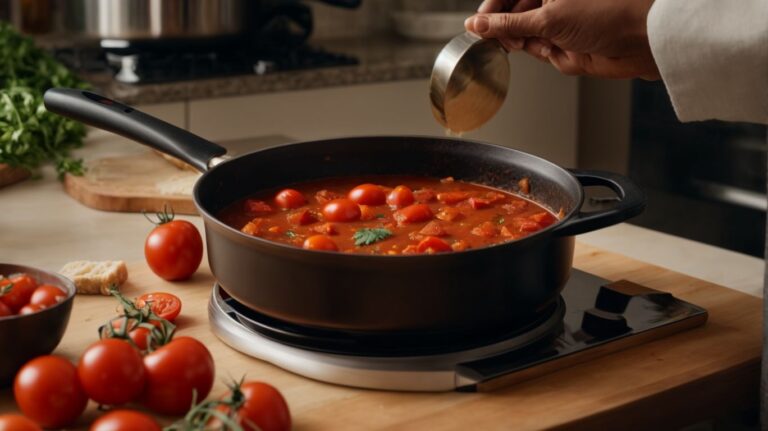How to Cook Millet After Soaking?
Curious about millet and how to prepare it? Look no further!
We will explore what millet is, how to properly soak it, and the reasons why soaking is beneficial.
We’ll also walk you through the steps of cooking millet after soaking, including tips on adding flavor with vegetables, herbs, and protein.
Plus, we’ll share some delicious millet recipes to inspire your next culinary creation.
Get ready to elevate your cooking game with this versatile and nutritious grain!
Key Takeaways:
What is Millet?
Millet, a versatile grain, is a nutrient-rich staple in many cultures, especially in India and Ayurvedic practices. It is known for its health benefits, including being rich in fiber, gluten-free, and providing a wholesome alternative to rice and other grains.
Millet is not only praised for its nutrition but also for its versatility in culinary applications. From porridges and pilafs to flatbreads and desserts, millet can be used in a variety of dishes. In Ayurveda, this grain is highly regarded for its balancing properties that promote good digestion and overall well-being.
Compared to refined grains like white rice, millet stands out as a whole grain, retaining its bran and germ layers, packed with essential nutrients, such as magnesium, phosphorus, and antioxidants. Its slow-releasing carbohydrates make it a great choice for steady energy levels, aiding in weight management and blood sugar control.
How to Soak Millet?
Soaking millet is a simple process that can enhance its nutritional profile and aid in digestion.
By allowing the millet to soak overnight in water or broth, the grains absorb liquid, making them tender and ready for cooking. This process not only enhances the texture of the millet but also activates enzymes that help break down the naturally occurring phytic acid, making it easier for your body to digest the grains.
Soaking overnight is highly recommended as it maximizes the benefits of this process, resulting in a softer, more flavorful final product that is gentler on the stomach. Whether you are a beginner in the kitchen or a seasoned cook, mastering the art of soaking millet is a valuable skill that can elevate your culinary creations.
Why Should You Soak Millet?
Soaking millet is crucial to unlock its full nutritional potential. This process helps break down anti-nutrients like phytic acid, enhances mineral absorption such as calcium, and promotes better digestion by reducing enzyme inhibitors present in the grain.
By soaking millet, you are essentially initiating the germination process, which leads to increased bioavailability of essential nutrients. Soaking not only aids in neutralizing phytic acid, known to impair mineral absorption, but it also helps release beneficial enzymes that aid in digestion.
The process of soaking activates enzymes that break down complex molecules, making it easier for your body to digest and absorb important nutrients. Soaking millet also helps improve the flavor and texture of the grain, making it more enjoyable to include in your meals.
How to Cook Millet After Soaking?
After soaking millet, cooking it to perfection is essential to retain its nutty flavor and ensure a healthy meal option. Millet’s low glycemic index makes it a favorable choice for those looking for a nutritious and flavorful grain.
One popular method to enhance millet’s flavor post-soaking is to toast it in a dry skillet before cooking. This process not only adds a delightful nuttiness but also helps preserve its nutritional value. Incorporating savory spices like cumin, turmeric, and garlic during the cooking process can further elevate its taste profile.
Millet’s health benefits extend beyond its rich flavor. It is gluten-free, high in fiber, and packed with essential nutrients like magnesium and phosphorus. Substituting rice with millet in your diet can help manage blood sugar levels, making it a great option for individuals with diabetes or those seeking a more balanced diet.
Step 1: Drain the Soaked Millet
The first step in cooking soaked millet is to drain the excess water or broth to prepare it for the cooking process. This ensures that the millet retains its fluffy texture and allows for better absorption of flavors like coconut oil during cooking.
Properly draining the soaked millet before cooking is crucial as it eliminates any excess moisture that could lead to a mushy consistency in the final dish. By doing this, you set the stage for each grain to cook evenly and maintain its individual integrity.
Removing the excess water enhances the millet’s ability to soak up the aromatic qualities of coconut oil and other seasonings, resulting in a more flavorful and fragrant dish.
Step 2: Rinse the Millet
Rinsing the soaked millet helps in removing any residual impurities or debris, contributing to a cleaner and safer cooking process. This step is especially crucial for individuals with gluten sensitivities or celiac disease to avoid any cross-contamination.
When millet is soaked, it can accumulate dirt, dust, or other unwanted particles that may have been present during processing or storage. By rinsing the millet thoroughly before cooking, you ensure that these impurities are washed away, providing a purer base for your dish. This not only enhances the overall hygiene but also plays a vital role in optimizing the taste and texture of the final preparation.
Step 3: Add Water and Bring to a Boil
Adding water to the drained millet and bringing it to a boil is a crucial step in the cooking process to ensure proper hydration and optimal preparation. This method helps unlock the grain’s health benefits and maintains its favorable glycemic index.
This process is essential for millet, a nutrient-dense whole grain that packs a punch of vitamins, minerals, and antioxidants. By allowing the millet to absorb water and simmer, you enhance its texture and flavor profile, making it not only delicious but also easier to digest. Boiling the millet properly helps retain its nutritional value, including fiber content and protein, ensuring you get the most out of this wholesome grain.
Step 4: Reduce Heat and Simmer
Reducing the heat and allowing the drained millet to simmer gently is essential for achieving a fluffy texture and enhancing its nutty flavor profile. Stirring occasionally during this process helps evenly distribute the heat and ensure uniform cooking.
When you reduce the heat and let the millet simmer gently, it allows the grains to absorb the liquid slowly, resulting in a more tender and flavorful outcome. This slow cooking method also helps in the development of the millet’s natural nuttiness, bringing out its unique taste. By giving the millet time to simmer and swell, you are essentially coaxing out its full potential, making each bite a delightful experience.
Step 5: Fluff and Serve
After simmering the millet to perfection, fluffing it with a fork is the final step before serving. Enhance the flavor by adding toppings like a squeeze of lemon juice or a dash of apple cider vinegar for a refreshing twist.
Fluffing the millet is a crucial step as it helps separate the grains and create a light, airy texture. Gently run the fork through the cooked millet, fluffing it up to ensure a nice consistency.
In terms of serving, presentation plays a key role. Consider garnishing the dish with fresh herbs or a sprinkle of toasted nuts for added texture and visual appeal.
For a burst of tangy flavor, drizzle lemon juice on top of the millet or opt for a subtle acidity with a touch of apple cider vinegar. These toppings not only add flavor but also elevate the overall taste profile of the dish.
What Can You Add to Millet While Cooking?
Enhance the flavor and nutritional profile of millet by incorporating various ingredients while cooking. Vegetables, herbs and spices, protein sources like soy sauce, and other flavorful additions can elevate the taste and appeal of your millet dishes.
Vegetables such as colorful bell peppers, crunchy carrots, and leafy greens not only add visual appeal but also provide essential vitamins and minerals.
Herbs like fresh cilantro, parsley, or mint can bring a refreshing aroma and a burst of flavor to your millet creations.
Consider adding protein-rich toppings like grilled tofu or tempeh marinated in savory soy sauce for a satisfying and balanced meal.
Explore different textures by incorporating crunchy nuts, chewy dried fruits, or creamy avocado into your millet dishes.
Vegetables
Incorporating a variety of vegetables into millet dishes not only enhances their flavor and texture but also boosts their nutritional value. Using vegetable stock as a cooking base can further contribute to gut health and overall well-being.
When you add a colorful array of veggies to your millet recipes, you not only introduce a burst of essential nutrients but also create a visually appealing and satisfying dish.
Vegetables like bell peppers, carrots, spinach, and tomatoes not only add vibrant colors but also enrich the dish with various vitamins, minerals, and antioxidants.
The natural juices from these vegetables infuse the millet with their flavors, resulting in a dish that is not only delicious but also nutritious.
Herbs and Spices
Infusing millet dishes with a blend of herbs and spices like black pepper can introduce depth of flavor and potential health benefits.
Certain herbs and spices, such as turmeric, cumin, and ginger, are popular choices to enrich millet-based recipes. Turmeric, celebrated for its vibrant color and curcumin compound, not only adds a warm, earthy taste but also offers anti-inflammatory and antioxidant properties.
A dash of cumin can provide a warm, aromatic flavor to the dish, while also aiding in digestion due to its potential to stimulate the production of digestive enzymes. Ginger, known for its digestive benefits and zesty kick, complements millet dishes superbly while offering anti-inflammatory properties.
Protein
Incorporating protein sources like tofu or legumes into millet dishes can provide a well-rounded meal option with balanced macronutrients.
Adding these protein-rich ingredients not only enhances the nutritional value of the dish but also helps in creating a more satisfying and complete meal. Tofu, for instance, is a versatile ingredient that can easily absorb the flavors of the dish while providing a substantial amount of protein. Similarly, legumes such as lentils or chickpeas offer a plant-based protein source that complements the texture and taste of millet. Balancing these proteins with healthy fats like avocado or olive oil, and carbohydrates from vegetables or whole grains, ensures a harmonious blend of nutrients for a well-rounded and fulfilling meal.
What Are Some Delicious Millet Recipes?

Credits: Poormet.Com – Eric Roberts
Explore the culinary world of millet with these delicious and nutritious recipes. From flavorful millet pilaf to comforting millet porridge and refreshing millet salad, these dishes showcase the versatility and appeal of this ancient grain.
If you’re looking to add a healthy and unique twist to your meals, millet is an excellent option. Starting with a hearty millet pilaf, you can combine this grain with aromatic spices, vegetables, and protein for a satisfying one-pot meal. For a comforting breakfast or snack, whip up a creamy millet porridge topped with fruits, nuts, and a drizzle of honey. If a light and refreshing dish is what you crave, a zesty millet salad with fresh herbs and a tangy dressing will hit the spot.
Millet Pilaf
Millet pilaf is a delightful dish that combines the wholesome goodness of millet with aromatic spices and flavorful ingredients. Using leftover millet can further enhance the dish’s texture and taste, while gentle stirring ensures a fluffy and inviting meal.
To create a sumptuous millet pilaf, start by sautéing onions, garlic, and your favorite spices in a pan until fragrant. Add the leftover millet and stir gently to incorporate the flavors. For added richness, toss in some toasted nuts or dried fruits. Consider using vegetable broth instead of water for extra depth of flavor. Cooking the pilaf covered allows the steam to permeate the grains evenly, resulting in a perfectly fluffy texture. A sprinkle of fresh herbs just before serving adds a refreshing touch to this wholesome dish.
Millet Porridge
Millet porridge offers a comforting and nutritious breakfast option that can be customized to suit individual preferences. Adding a drizzle of coconut oil to the porridge not only enhances its flavor but also contributes to a balanced glycemic index for sustained energy.
When preparing millet porridge, start by rinsing the millet thoroughly to remove any excess starch. Then, combine the millet with water or your preferred plant-based milk in a pot and bring it to a gentle simmer. Stir occasionally to prevent sticking and cook until the millet is soft and creamy. The addition of coconut oil not only provides a hint of tropical flavor but also boosts the healthy fats in the porridge, aiding in nutrient absorption. For a touch of sweetness, consider adding a drizzle of honey or maple syrup before serving.
Millet Salad
Millet salad is a refreshing and nutrient-packed dish that combines the goodness of millet with an array of fresh vegetables and a zesty dressing. Drizzling lemon juice over the salad not only enhances its flavors but also adds a burst of citrusy goodness.
Adding lemon juice to the millet salad not only provides a vibrant tanginess but also boosts the salad’s nutritional value with its rich Vitamin C content.
This simple yet delicious dressing brings a balance of freshness and acidity, complementing the earthy tones of the millet and the crispness of the vegetables.
The combination of textures and flavors in this salad creates a delightful eating experience, perfect for those looking to enjoy a nutrient-dense meal with a burst of refreshing flavors.





